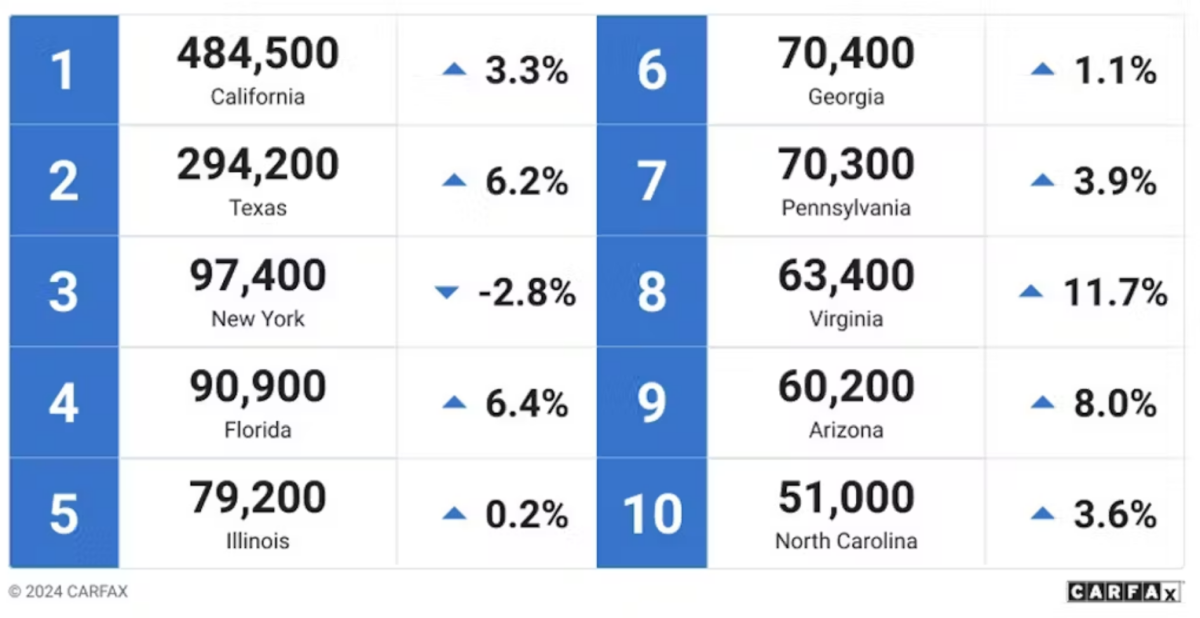Odometer fraud is on the rise across the country
CARFAX reported that over 2 million vehicles may have had their mileage altered, costing buyers thousands.

Odometer fraud is becoming a growing concern for used car buyers, with more than 2.14 million vehicles on U.S. roads potentially showing falsified mileage in 2024, according to a new report from CARFAX. This marks an 18% increase since 2021 and highlights a serious issue in the used car market, costing buyers thousands of dollars extra in inflated car prices.
Related: EV battery prices are plunging
Why odometer fraud is growing
Modern technology has made odometer rollback easier than ever, allowing bad actors to alter a car’s mileage in seconds.
“Odometer rollbacks can occur when an unscrupulous owner or seller of a car alters the miles that display on a car’s gauge cluster,” said Faisal Hasan, vice president of data and public policy at CARFAX. “This might be done as a way to avoid mileage charges in a vehicle lease or to dramatically increase the value of a car.”
Unsuspecting buyers can lose an average of $4,000 due to fraudulent mileage readings. These vehicles also tend to have significantly more wear and tear than advertised, leading to unexpected repair costs and potential safety risks.
Related: 2024 Maserati GranTurismo Modena review: Tradition and turbos in perfect harmony
States hit the hardest
Odometer fraud is not confined to a single region. Nine of the top ten states with the highest number of odometer rollbacks saw increases this year. Virginia recorded the sharpest rise, with a nearly 11.7% increase, followed by Arizona at 8.0% and Florida at 6.4%. For buyers, these statistics highlight the importance of vigilant inspections when buying in the used car market.
In Atlanta, driver Jimmy Hendon narrowly avoided a costly mistake when he discovered the odometer on a Chevy truck had been rolled back. “I located a beautiful Chevy 4×4 Truck that sounded perfect: low miles, great condition, etc. When I ran the CARFAX on the vehicle, I discovered the truck had approximately 180,000 miles rather than the 108,000 stated,” Hendon said. “The mileage was so far off from the accurate mileage that it was crazy.”
How buyers can protect themselves
Protecting yourself from odometer fraud requires careful research and inspection. Checking a vehicle’s history through services like CARFAX can reveal discrepancies in mileage by comparing title, maintenance, and inspection records. Physical clues, such as excessive wear on gas, brake, or clutch pedals, can also indicate that a car has more miles than advertised. Having a trusted mechanic inspect the vehicle can also uncover inconsistencies and ensure the car’s condition matches its reported mileage.
Related: Can Tesla’s NACS chargers save Volvo’s stalled EV sales?
Final thoughts
As odometer fraud becomes more widespread, it is clear that technology, while making vehicles easier to manipulate, has also empowered buyers with tools to protect themselves. Services like CARFAX and thorough vehicle inspections are crucial in an era where deceptive practices can cost buyers thousands of dollars.
Awareness is the first line of defense, and with diligence, used car buyers can avoid falling victim to fraudulent sellers. The rise in odometer fraud is a stark reminder to approach any deal with a healthy dose of skepticism and an informed perspective.











































